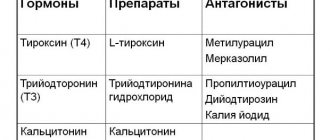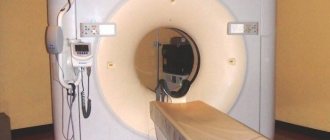General blood test for ARVI
If you notice cold symptoms, it is important to consult a doctor at the clinic. The purpose of laboratory tests and tests depends on a number of reasons:
- patient's health status;
- types of disease.
Blood is a multifunctional fluid, including a carrier of information about a person’s condition. Therefore, it is her analysis that will be reliable and capacious. The most famous and convenient laboratory test is a complete blood count (CBC), as it has a number of advantages:
- Speed. You can diagnose a liquid in a matter of minutes, which is sometimes very important. But high speed does not mean poor quality. This analysis provides all the basic information about the patient’s condition.
- Unpretentiousness. For such a study, samples can be taken from either a finger or a vein. Which is even a significant plus if a child gets sick. Taking venous blood from him will be a real problem, when it’s much easier to do it out of the blue.
- Price. For people with health insurance, such a study will be free when visiting a clinic. But even if it is not possible to donate blood through insurance, this can be done in any private laboratory at a very affordable price.
The essence of the analysis is that various blood parameters are examined. Depending on gender and age, in the normal state of the body, each indicator should be in a certain range.
If he goes beyond the limits, then the person has some kind of pathology. Recently, people who do not have a medical education, using the Internet, can distinguish between basic indicators and learn about ailments based on the results.
Attention! Despite the large amount of information on the Internet, it is best to consult a doctor for a transcript of the analysis.
In case of ARVI, it is important to exclude bacterial infection. This is precisely the main assistant of the UAC. The presence of a virus cannot always be determined by analysis, but bacteria can be identified without problems.
Flu test: where and for how much
The symptoms of dangerous flu are announced, instructions on “what to do at the first signs of illness” are given. And yet, if you are concerned about being infected with influenza A/H1N1, but have no desire to go to the district clinic, then you have the opportunity to get tested for a fee.
The doctor has the right to make a diagnosis of “flu” without special tests, only on the basis of clinical symptoms: intoxication (a sharp rise in temperature to 39 ° C and above, weakness, headache, aches in muscles and joints) and catarrhal phenomena (signs of a cold, runny nose, sore throat or cough). Information about previous contacts with influenza patients is also important. However, it is possible to know for sure whether a person is sick with the flu, in particular “swine”, or a regular ARVI, only by the results of a special analysis.
Free medicine
You shouldn’t expect miracles from district clinics—they don’t test for influenza here. “If a local doctor, say, on call, sees a clearly flu-like picture with severe intoxication, a moderate or severe condition of the patient, then he will definitely suggest hospitalization,” general practitioner Anastasia Eleeva told an Infox.ru correspondent. — First of all, this applies to elderly patients. And children, of course.” In the infectious diseases hospital, patients undergo the necessary tests immediately upon admission. Today, therapists are called upon to be even more vigilant - not only to prescribe antibiotics to patients with suspected pneumonia, but to insist on their hospitalization in order to find out the cause of the disease, exclude and prevent dangerous complications.
There is no point in calling “03” about a flu test, since the “ambulance”, as the Infox.ru correspondent was told, does not deal with such issues.
If you can't wait to know
PCR analysis The polymerase chain reaction method is extremely informative. The presence of the desired infection is detected with the most minimal amounts of microorganisms in the material. The reliability of PCR for influenza viruses tends to be 100%. For analysis, a smear is taken from the mucous membrane of the nasopharynx.
So, you can get tested for swine flu for free only in an infectious diseases hospital and only if you were referred there by a doctor. Often, Russians prefer to act on their own, either not trusting government medicine too much, or not wanting to deal with queues and low levels of service. Many people try to avoid the local clinic even in case of acute illness. Not to mention prevention and screening tests. Nevertheless, epidemiologists strongly recommend testing for the presence of the virus both when flu symptoms appear and after contact with patients carrying the A/H1N1 virus.
There are at least two large state scientific institutes in Moscow, in whose laboratories you can be tested for influenza A/H1N1 on a commercial basis and receive an answer within 48 hours. We are talking about the State Research Institute of Epidemiology and Microbiology named after. N. F. Gamaleya and the Central Research Institute of Epidemiology under Rospotrebnadzor. The latter is located in the east of the city, in the Novogireevo area, and has three more laboratory points in Moscow. The Gamaleya Institute operates three laboratories in different areas of Moscow. Analyzes cost 1200-1300 rubles. A nasopharyngeal swab (material for analysis) is taken directly on site. The reliability of PCR reaches 100%.
The price of truth
On the day of analysis you cannot smoke; brush your teeth in the morning; rinse your mouth with refreshing products; chew gum.
The indicated cost turned out to be the average for the city; for the same money, dozens of commercial laboratories are ready to diagnose swine flu. You can also contact any of them independently, without a doctor’s referral. For the experiment, Infox.ru called five well-known paid laboratories in the capital - three of them are network, and the largest has more than a hundred offices. It turned out that only three of the five specified laboratories are ready to perform PCR analysis for the influenza A/H1N1 virus. And far from those that are considered the largest. The cost of the analysis is the same 1200 rubles. In the case when the collection of material from the nasopharynx is not carried out in the laboratory itself, the cost is reduced to 800 rubles. In addition, two out of three laboratories are ready to come for analysis directly to your home or office (wholesale tests are cheaper). There are also promotions: one of the institutions does a swine flu test for 50% of the price if the patient arrives early in the morning, from 7.00 to 8.00.
Total: in Moscow it is not difficult to get tested for swine flu; the price for this service is almost identical in all laboratories. You can find the medical institutions you need through a simple Internet search. In addition, the most advanced local therapists can recommend laboratories at reputable state research institutes.
Blood test for children and adults
The onset of the disease has a complex negative effect on the body, and blood is no exception. Due to the disease, its formula changes.
UAC allows you to track changes. No special preparation is required for taking it, but it is believed that a blood test taken on an empty stomach will be most reliable.
Females are not recommended to donate blood during menstrual periods, and all patients should not take hot baths the day before, eat fatty and spicy foods, or visit saunas and steam baths.
Reference! In addition to the CBC, there is also a clinical blood test (CBC). If the doctor prescribed it, then there is no need to be afraid, since these two tests are essentially the same thing.
The vast majority of people prefer to treat themselves and their children on their own. Because everything seems obvious: runny nose, fever, weakness. There is no point in going to the hospital in this condition.
But it won’t hurt to get tested, since the disease may initially be mild, but then complications may appear that could be predicted based on the results of a blood test.
In healthy adults, the indicators shown in Table 1 are considered normal.
Table 1. Indicators
| № | Index | Norm for men | Norm for women |
| 1 | Red blood cells (RBC),1012/l, tera/liter | 4,4 — 5,0 | 3,8 — 4,5 |
| 2 | Hemoglobin (HBG, Hb), g/l | 130 — 160 | 120 — 140 |
| 3 | Hematocrit (HCT), % | 39 — 49 | 35 — 45 |
| 4 | Color Index (CPU) | 0,8 — 1,0 | |
| 5 | Average value of erythrocyte volume (MCV), fl | 80 — 100 | |
| 6 | Anisocytosis of erythrocytes (RDW), % | 11,5 — 14,5 | |
| 7 | Reticulocytes (RET), % | 0,2 — 1,2 | 2,0 — 12,0 |
| 8 | White blood cells (WBC), 109/l, giga/liter | 4,0 — 9,0 | |
| 9 | Basophils (BASO), % | 0 — 1 | |
| 10 | Lymphocytes (LYM), % | 19 — 37 | |
| 11 | Monocytes (MON), % | 3 — 11 | |
| 12 | Platelets (PLT), 109/l | 180,0 — 320,0 | |
| 13 | Thrombocrit (PCT), % | 0,1 — 0,4 | |
| 14 | ESR, mm/hour | 1 — 10 | 2 -15 |
For children, the normal numbers are those shown in Table 2.
Table 2. Indicators for children
| № | Index | Normal up to a year | Norm 1 – 6 years | Norm 6 – 12 years |
| 1 | Red blood cells (RBC),1012/l, tera/liter | 3,6 — 4,9 | 3,5 – 4,5 | 3,5 – 4,7 |
| 2 | Hemoglobin (HBG, Hb), g/l | 100 — 140 | 110 — 145 | 116 — 150 |
| 3 | Reticulocytes (RET), ‰ | 3 — 15 | 3 — 12 | |
| 4 | Eosinophils (EO), % | 2 — 7 | 1 — 6 | |
| 5 | Neutrophils (NEUT), % | 15 — 45 | 25 — 60 | 35 — 65 |
| 6 | Reticulocytes (RET), % | 3 — 15 | 3 — 12 | 2 — 12 |
| 7 | Basophils (BASO), % | 0 — 1 | ||
| 8 | Lymphocytes (LYM), % | 38 — 72 | 26 — 60 | 35 — 65 |
| 9 | Monocytes (MON), % | 2 — 12 | 2 — 10 | |
| 10 | Platelets (PLT), 109/l | 180 — 400 | 160 — 380 | |
| 11 | ESR, mm/hour | 2 — 12 | 2 — 10 | |
In some cases, the standards may differ from those indicated in the table. This depends on the equipment of a particular laboratory. As a rule, most forms with analysis results have a column with the norms for all indicators.
Since ARVI is not one specific illness, but many colds, it is a blood test that will allow us to judge the nature of the course of the disease.
Clinical picture of different forms of influenza
The disease can occur in various forms, which differ in their clinical picture:
- Mild – rare headaches, weakness, temperature up to 38°C, decreased appetite.
- Moderate - the temperature rises to 39°C, signs of catarrhal syndrome appear (swelling and inflammation of the mucous membranes, runny nose, sore throat and dry cough).
- Severe – severe symptoms of intoxication: fever, chills, nausea, body temperature - 40°C.
- Hypertoxic is the rare and most dangerous form. It is developing rapidly. In the first hours of the disease, symptoms of catarrhal syndrome appear, after which - hemorrhagic (nosebleeds, facial flushing, nausea and vomiting), respiratory and encephalic.
The manifestations of any of the influenza strains remain individual. It all depends on the person’s immunity. Complications are possible in people with chronic disorders of the lungs, heart or circulatory system. A bacterial infection may also occur.
What can be increased or decreased in the blood?
As already mentioned, the presence of a disease in the human body is indicated by deviations in blood test parameters. Since this or that disease on a sheet with test results looks like a set of indicators that go beyond the boundaries of the norm, only a doctor can evaluate the picture in its entirety.
Leukocytes
White blood cells are indicators of the functioning of the immune system. If their indicator is too high, then the person’s defense mechanisms are activated, which means there is a pathogen.
As a rule, a reaction in the form of an increase in white blood cells occurs to inflammation or allergies. If their number is below normal, then possible reasons include ARVI and infectious diseases such as scarlet fever, rubella and some others.
It is worth noting that leukocytes have the following varieties, which perform different jobs in the immune response.
- Neutrophils. There are two options - mature and immature. When the immune system is activated, the number of young people decreases.
- Eosinophils. Their job is to remove toxins and parasites from the body, as well as reduce the number of cancer cells. In ARVI, their number remains within the normal range.
- Basophils. Since their percentage in the blood is small, they may not be detected at all in the CBC of a healthy person. Since they are formed during extended inflammatory processes, during ARVI they should not be present or their presence corresponds to the norm.
- Monocytes. They recognize foreign substances in and teach other white blood cells to identify them. They can also turn into macrophages and engage in cleansing activities at the site of inflammation. Without this work, the restoration process will not begin.
- Lymphocytes. The main “fighters” are pathogens, so their number also increases during illness.
You need to be very careful about the words “above or below normal.” Firstly, we must not forget about age and gender, otherwise you can make a serious mistake. Secondly, it is necessary to consult a doctor and provide him with your entire medical history. Because there are cases when some blood indicator is outside the acceptable limits for a certain person will be the norm.
ESR
ESR – erythrocyte sedimentation rate. When studying blood in a laboratory, the rate of sedimentation of fractions is also analyzed. It increases if there is inflammation in the body because the protein content increases. There is no proportional relationship between the disease and ESR, but doctors prefer to take this indicator into account. For example, if at the beginning of the disease it was overestimated, and after treatment was prescribed it began to decline, then the therapy was chosen correctly.
It should be noted that a child can react sharply to a cold and ESR in such cases can be greatly overestimated. In adults, the indicator increases, but not by tens of units. Also, a very increased rate of this speed occurs in acute conditions.
In conclusion, I would like to note that the importance of laboratory blood tests in acute respiratory viral infections cannot be underestimated. It is the analysis that allows you to determine the nature of the disease and thereby quickly begin to treat it correctly.
E With a respiratory viral infection, lymphocytes are often high, and neutrophils and eosinophils are within normal limits. During influenza, lymphocytes and neutrophils decrease, but eosinophils are normal.———
When does a doctor prescribe a diagnosis?
Diagnosis of the pathogen is carried out during hospitalization in case of severe infection and the development of complications. The virus is searched for using complex laboratory methods:
- In any secretion - the patient's secretion, no matter in the blood or saliva, a particle of the genetic apparatus of the virus - RNA - is detected using the polymerase chain reaction (PCR) method.
- Blood is taken to perform a hemagglutination inhibition test (HIT), which detects antibodies to the virus.
- Enzyme-linked immunosorbent assay (ELISA) and immunofluorescence microscopy method detect signs of the presence of the virus - antigens in the wash from the mucous membrane.
If you have signs of a respiratory viral infection, do not try to diagnose it yourself. Many serious diseases at the beginning of their development occur under the mask of influenza.
Get a consultation with a doctor
Analysis of urine
Urine is an important product of human life. With it, most toxic substances, breakdown products, hormones, salts and other compounds valuable for research are removed from the body. The percentage of content of a particular substance, the organoleptic and physical properties of the liquid help in the diagnosis of various diseases.
How to prepare
The percentage of urine components varies constantly, as it is influenced by diet, intensity of physical activity, use of medications, dietary supplements, and even emotional state. To avoid mistakes when assessing the patient’s health, prepare the body.
For this:
- A couple of days before the test, avoid intense physical activity and bathing.
- Do not drink alcoholic beverages or diuretics.
- During the day, do not eat foods with strong pigmentation (this affects the shade). Such products are: fruits, vegetables and berries of bright colors; smoked, pickled and sweet dishes.
- If you have a disease of an infectious nature, which is accompanied by hyperthermia and increased blood pressure, then postpone taking tests until you have fully recovered, since no conclusion can be drawn based on the results obtained.
- If you have had a cytoscopy, then carry out the tests no earlier than in a week.
- You cannot take the test during menstruation.
If you are taking dietary supplements, vitamin compounds or medications, tell your doctor about this.
Just before taking the liquid, consider the following:
- For analysis, they use the fluid that has accumulated in the bladder overnight, so the collection procedure is performed in the morning, immediately after waking up.
- Wash yourself to avoid foreign particles (including microflora components).
- The collection container must be sterile; use disposable containers.
- To avoid microflora components located on the external genitalia getting into the container, do not lean the container against the skin. For the same reason, release a little liquid, and only then replace the container. 150 ml will be enough for analysis.
- Already collected urine is stored in a closed container for no more than 2 hours at a temperature of 5-8 degrees.
- A special urine bag is used to collect urine from an infant.
Decoding the analysis results
When analyzing, experts pay attention to physical, chemical and organoleptic properties, as well as sediment.
Physical properties
In the laboratory, the emphasis is on color, density, odor, acidity and transparency.
The color of urine is directly affected by its density, as well as the consumption of brightly colored foods. Normal density ranges from 1003 to 1028 units. In men, urine density is usually higher. The increase in this indicator is also affected by the warm season and dehydration due to diarrhea or vomiting.
The normal acidity level (pH) ranges from 5-7. The change in this indicator is significantly influenced by diet. An increase in this indicator is associated with excessive physical activity, fasting, or excess consumption of fatty foods.
The color of urine during normal functioning of the body is warm yellow. Reddish hues indicate pyelonephritis, kidney stones or kidney cancer. Orange – about hepatitis or cirrhosis; black is a sign of alkaptonuria, and pale gray indicates purulent inflammation. Dark urine is often found in ARVI.
Normally, urine has a specific odor, but not a strong one. The smell of ammonia means the presence of inflammation in the genitourinary system, and the smell of acetone means diabetes.
The urine of a healthy person does not foam. If foam is present, then conclusions are drawn about heart disease, diabetes or metabolic disorders.
If everything is in order with the body, then the fluid secreted by the kidneys is transparent. Turbidity is a sign of the presence of salts, blood, mucus, pus or bacteria. Depending on what is causing the opacity, a specific pathology is suspected.
Chemical indicators
Normal protein levels range from 0 to 0.033 grams per liter. Exceeding this indicator means the presence of renal pathologies. If the excess is significant and ketone bodies are present in the urine, then diabetes mellitus is suspected.
There should be no bilirubin in the urine; if it is present, then the patient has liver problems.
Microscopic examination
Blood cells may be present, but in small quantities. The number of leukocytes should not exceed 5 (low leukocytes in the urine is normal), and red blood cells – 2.
If there are more of the latter, this indicates pathologies of the urinary tract or poisoning.
An increase in the number of leukocytes occurs with ARVI, the presence of pyelonephritis, and diseases of the genitourinary system.
A healthy person is not characterized by the presence of hyaline, granular or waxy casts; as well as salts, bacteria or fungi.
Based on this text, you cannot diagnose yourself and self-medicate.
A urine test provides valuable information for a specialist and can tell a lot about a person’s physical condition. Follow the rules for taking the test; this will help you get accurate results and avoid mistakes that can cause harm to your health.
Source: lor-orvi.ru
Assessment of the blood picture for influenza
Changing the general blood test on the symptoms of influenza has practically no significant effect, but nevertheless, this test should be carried out without fail in the presence of an influenza-like infection. A general blood test for this infection helps to avoid certain problems that may arise if the diagnosis is not entirely correct.
Thanks to modern technologies, it has been established that in 25% of all cases of influenza, there is a decrease in the level of leukocytes in the blood - called leukopenia, and this happens from the very first day of the disease.
Changes in leukocyte counts during influenza
At the very beginning of the disease, a normal number of leukocytes or a slight increase in their indicators – leukocytosis – may be observed. Approximately on the 3rd – 4th day of the disease, leukopenia is observed in 75% of all people sick with influenza. In the absence of leukopenia, the development of a complication of the disease or the manifestation of concomitant diseases, accompanied by an increase in the number of leukocytes, is usually diagnosed. This condition is called leukocytosis, characterized by changes in the blood picture.
During the period of fever, there is often an absence or decrease in the level of eosinophils and neutrophils, called respectively neutropenia (which corresponds to leukopenia) and relative lymphopenia (from 1 to 2 days of the disease), as well as the development of relative lymphocytosis (from the 3rd day and later). Absolute lymphopenia, monocytosis (slight shift of neutrophils to the left), early thrombocytopenia, or toxic granularity of neutrophils can also be diagnosed. Erythrocyte sedimentation rate (ESR) values in these cases usually remain within normal limits.
Concomitant diseases and complications also affect changes in the composition of peripheral blood. Depending on the nature of the disease itself and the degree of its influence on leukopoiesis (the process of formation of leukocytes in the bone marrow), as well as the degree of influence on the formed elements of white blood, changes occur in the values of the general blood test.
When the condition of a person suffering from influenza improves, eosinophils return to the blood, the level of toxic granularity of neutrophils decreases, and the number of lymphocytes normalizes.
During the recovery period of a person, a process of normalization of blood tests is observed, which can take up to several weeks. Often, there are no changes in the blood picture after recovery, and the blood of a person who has had the flu, over time, no longer differs in any way from the blood of a healthy person.
Source: www.kakprosto.ru
Laboratory diagnosis of ARVI
All negative processes occurring under the influence of pathogenic microflora have a complex effect on the child’s body, including changing the blood formula. A general blood test in children helps to identify such changes, confirm the diagnosis, and exclude the presence of a more serious infection. To conduct laboratory tests, several milliliters of blood are taken from the child’s finger. The analysis does not require special preparation, but the most reliable results are obtained from a fasting blood test.
Study of blood elements
Some parents do not understand why do a blood test in children with ARVI and once again expose the child to stress. ARVI in children is quite mild, but sometimes such symptoms can hide a more serious illness. It is a general blood test for ARVI in a child that will give an idea of the general condition of the body, allow one to evaluate changes in the blood in combination with other symptoms, and confirm the diagnosis. It will indicate the extent of the spread of the pathological process and will help to identify in time the addition of a bacterial infection, which most often causes complications.
Blood in the human body performs transport and protective functions. It consists of special cells that carry oxygen, nutrients, and provide immune protection. By the content of various components of the blood, you can find out whether an infection is present in the body, determine its origin, identify the inflammatory process, and determine how efficiently the blood coagulation system works. Therefore, those mothers and fathers who are not sure whether they need to donate blood for analysis in case of ARVI in a child should understand the importance of this study.
A study to determine the strain of the influenza virus at ON CLINIC
To get tested and determine whether you and your loved ones need special treatment for swine flu, just contact the ON CLINIC International Medical Center. You will be received without a queue at any convenient time, including weekends and holidays.
The study is carried out using the PCR method. The specificity of the method makes it possible to identify the pathogen even in the incubation period, when clinical manifestations of the disease are either absent or barely noticeable.
We have our own clinical diagnostic laboratory, which has an international quality control certificate. Therefore, the test results are delivered to patients as soon as possible.
Once the diagnosis is clarified, you can immediately begin therapy. Treatment based on the type of flu will help defeat the disease faster and prevent the development of dangerous complications.
If necessary, collection of materials for analysis is possible at home.
General blood test for ARVI
Measuring the content of basic shaped elements in the blood will help identify abnormalities in the body caused by any disease. What does a child’s general blood test show:
- Hemoglobin is a protein responsible for gas exchange in the blood, giving it its red color;
- Red blood cells are cells containing hemoglobin and providing transport of oxygen and carbon dioxide;
- Platelets - responsible for clotting;
- ESR is a reaction that, in combination with other indicators, indicates the absence or presence of inflammation;
- Leukocytes (neutrophils, eosinophils, lymphocytes, monocytes, basophils) – provide immunity.
A general blood test is one of the reliable ways to distinguish influenza from ARVI, measles, rubella, mononucleosis and other infections.
Blood counts for ARVI
Normal Blood Test Range Chart
| Age | Leukocytes | Leukocyte formula, % | Plasma | ESR | |||
| Neutrophils | Lymphocytes | Monocytes | |||||
| PO Box | s/y | ||||||
| 10 days | 8,5 — 14 | 1 — 4 | 27 — 47 | 40 — 60 | 6 — 14 | 0,25 — 0,5 | 2 — 10 |
| 1 month | 8 — 12 | 1 — 5 | 17 — 30 | 45 — 60 | 5 — 12 | ||
| 1 year | 7 — 11 | 1 — 5 | 20 — 35 | 45 — 65 | 4 — 10 | ||
| 4-5 years | 6 — 10 | 1 — 4 | 35 — 55 | 35 — 55 | 4 — 6 | ||
| 10 years | 6 — 10 | 1 — 4 | 40 — 60 | 30 — 45 | 4 — 6 | ||
| 15 years | 5 — 9 | 1 — 4 | 40 — 60 | 30 — 45 | 3 — 7 | ||
Deciphering a blood test in children helps confirm ARVI using the following characteristic signs:
- The leukocyte count is normal or slightly reduced, very rarely higher than normal;
- Increased number of lymphocytes, monocytes;
- Decreased neutrophil content;
- Possible increase in eosinophils;
- ESR is increased. In chronic ARVI, the indicator may be normal, but in severe cases it can increase significantly.
| Viral infection | Bacterial infection | |
| Leukocytes | reduced content | increased content |
| Lymphocytes | increased content | reduced content |
| Increased p/i neutrophils | not typical | typical |
| Appearance of myelocytes | not typical | typical |
| ESR | norm | increased content |
| Eosinophils | increased content | little at first |
To navigate the laboratory test results and understand how to determine ARVI using a blood test, you should pay attention to the above indicators.
Source: protiv-grippa.com
Main flu symptoms
During the cold season, ARVI and influenza become frequent. They are infectious diseases of an epidemiological nature that can be transmitted by airborne droplets. The flu can be accompanied by the following main symptoms:
- Severe weakness.
- A sharp increase in temperature.
- Dry cough.
- Pain and spasms in the joints.
- Chills.
- Chest pain.
- Severe pain in the head, which provokes tearing.
- Nasal discharge.
- Redness of the skin.
- Gastrointestinal upset: nausea, diarrhea, vomiting.
A runny nose is not observed with the flu. The first symptoms usually begin to appear only 1-3 days after infection. In this case, the person himself becomes a carrier of the infection 20-30 hours before the onset of the disease. Thus, people with whom a sick person communicates can become infected from him without even knowing it.
When the clinical picture of influenza begins to appear, the temperature rises sharply, up to 39°C. The fever can last for 3-5 days.
All preventive measures taken, including vaccination of the population, to a greater extent protect people from influenza infection. However, the infection constantly mutates, adapting to new conditions. Sometimes vaccination may not help, moreover, even lead to the death of the patient.
However, this does not exclude all possible preventive measures that must be taken to avoid the occurrence of influenza. It’s better not to get sick than to spend long days being treated.
go to top
Causes of the flu epidemic
Influenza is an epidemic of new mutated strains of the virus that can infect a huge number of people in a short time.
- The main peak of the disease mainly falls in the winter season.
- Those infected with the virus often consider the disease to be harmless and try to treat themselves. But doing this is strictly prohibited.
Thus, statistics show that, due to a lax attitude towards one’s own health and lack of necessary vaccination, up to 500 thousand people die from influenza every year in the world.
- The main source of infection is considered to be a person infected with the virus.
- The main route of spread of infection is airborne droplets.
- Isolation of the influenza pathogen usually ends a week after infection.
- But there are exceptions, for example, in the case of viral pneumonia, the patient remains potentially dangerous for 2-3 weeks.
- It is very important to carry out mass vaccination of the population every year.
- And observe anti-epidemic rules during an influenza outbreak: timely isolation of sick people from healthy people.
Viruses and bacteria
Laboratory blood tests can determine whether the flu is caused by viruses or bacteria. Moreover, an accurate diagnosis is established, since many respiratory diseases have similar symptoms. It is impossible to accurately determine what a person is suffering from just by external signs. Instrumental diagnostics allows you to examine all the respiratory tract and identify the source of the disease.
If the diagnosis of “flu” is confirmed, then it remains to find out the nature of its origin. Viruses are common triggers. They are much more dangerous than bacteria that constantly live in the human body (on the mucous membranes of the nose, mouth, etc.), but in small quantities, and therefore do not provoke disease.
Bacteria are activated when the immune system decreases, which is quite possible after the development of a viral disease. The addition of bacteria after the body is damaged by viruses is a common occurrence. Viruses become dangerous due to the fact that they are parasites that penetrate a healthy cell of the body, after which they force it to reproduce “viral copies”.
Typically, the body activates its protective functions as soon as bacteria or viruses begin their “harmful” activities. This is expressed in the production of interferon, which reacts with healthy cell tissue and activates the immune response. Often the immune system needs help in the form of medications and natural ingredients. This is what treatment is all about.
Sometimes viruses live in the human body for a long time or for a lifetime. They are in a passive state, without negatively affecting the body and without activating the immune response. Only when favorable conditions arise will they become active, which will cause disease.
It is recommended to spend the first time when the flu appears in bed. A person will be able to focus all his efforts on treatment, as well as eliminate contact with healthy people.
go to top
How does the influenza virus damage cells?
The virus is released in microscopic droplets of moisture during breathing, sweat and saliva. The cause of the disease is the entry of a viral particle into the upper respiratory tract of a healthy person. With the help of HA processes, the infectious agent makes its way inside the cell, where it starts the process of its division. Newly born particles are already taken out of the cell through the processes of NA.
A cell affected by a virus produces protective inflammatory factors that should destroy the internal enemy, but in this deadly broth, called the “cytokine storm,” the cell itself dies. Released toxic products disrupt biochemical processes in the cells of the heart, lungs, and brain, leading to exacerbation of chronic diseases. After such an attack, immunity decreases, and then bacteria and fungi begin to attack.
We will call you back
Leave your phone number
Blood test indicators
The appearance of influenza or other viral diseases forces doctors to conduct a diagnosis. A blood test is done, the results of which should indicate a specific disease. With influenza, the level of leukocytes in the blood remains normal. In some cases, their number may be increased or decreased, which is associated with the number of neutrophils.
The decrease in the number of neutrophils is explained by the transition to the source of inflammation and the production of cortisol due to the stressful state of the body. The erythrocyte sedimentation rate (ESR) is also checked and should be slightly elevated. The ESR level will be very high if the disease is severe.
The first 2-3 days of influenza are accompanied by leukocytosis, in which a band shift is observed.
Other indicators of influenza in a blood test will be:
- A decrease in lymphocytes in the bloodstream 12-16 hours before the onset of the disease.
- Lymphopenia, which will continue throughout the illness.
- Hematocrit and hemoglobin levels will remain normal.
In addition to the blood test, other tests are performed, which together help establish the diagnosis of influenza:
- Urinalysis remains mostly normal. Only at the peak of the disease is a small amount of protein and red blood cells observed.
- Examination of nasal mucus to reveal the epidemiological nature of influenza. This is done with special dyes and devices that help identify the infection.
- Rapid tests that give 40-70% results.
- Taking a medical history that tracks a person's movements to identify the source of influenza virus infection.
go to top
When might you need an at-home flu test?
An express test is not painful, not scary, and quick. The doctor can take a swab from the child’s nasal or throat mucosa right at the appointment, and within 5 minutes you will receive confirmation of the diagnosis of influenza with clarification of the type of virus.
If your baby is sick and feels very unwell, you have the opportunity to call a pediatrician at home. All EMC doctors always have diagnostic kits with them. You do not need to specially come to the clinic or go to the laboratory, donate blood from a vein for analysis and wait several days for the results. And most importantly, the result will be obtained immediately and treatment will be prescribed in a timely manner.
Flu treatment process
Flu is a serious disease, especially during an epidemic. Here it becomes important to consult a doctor who will prescribe home treatment (only in severe cases the patient is hospitalized). The process of treating influenza consists of an integrated approach, when not only the infection is destroyed, but also the symptoms that torment the person are eliminated.
The doctor must take into account the individual characteristics of the body so that the patient does not exhibit allergic reactions to the components of the medications. In case of pathological reactions, medications are replaced with others so as not to make the patient’s condition even worse.
Correct treatment will be noted 5 days after it began. The patient will begin to recover, which will be noted in a decrease in temperature, elimination of joint pain, muscle spasms, cough and runny nose.
During the treatment itself, the patient must remain in bed. Since his body is very weak at this time, various pathologies may develop in the cardiovascular system, kidneys, lungs and liver. In addition, the patient must:
- Air your room 3 times a day.
- Drink as much fluid as possible. Tea with lemon and cranberry juice will be beneficial.
- Get more vitamin C in a variety of ways.
- Stick to a healthy diet.
- Normalize sleep patterns.
- Avoid hypothermia.
Similar measures can be taken during periods of health. They will help avoid the flu, keep the body in good shape and strengthen defense mechanisms.
You should also get an annual vaccination to prevent infection with influenza viruses.
go to top
Effective prevention of influenza
Every year, by the beginning of autumn, WHO announces which strains of the pathogen will cause disease in winter and pharmaceutical manufacturers begin to prepare certain vaccines. Vaccination is not required for everyone, but those who work with patients or work in children's groups may contribute to the spread of infection among frail elderly people. Research has proven that vaccination is the best prevention of serious illness and its complications and actually reduces the mortality rate of the population.
Vaccination is carried out either with the whole virus or with its particles, and causes the formation of immune defenders in the body. Live vaccines are the most effective, but they also cause more complications. Preparations with a weakened – inactivated virus cause a limited protective reaction, but are better tolerated. Vaccinal immunity occurs by the end of the second week and lasts for several months.
Only a doctor, from all the variety of vaccines, can choose the best drug for you, taking into account possible complications, and predict the optimal immune response. This will not take much time, but will protect you from complications of infection. Contact your doctor at the Infectious Diseases Center. Make an appointment with an infectious disease specialist: +7 (495) 230-00-01











